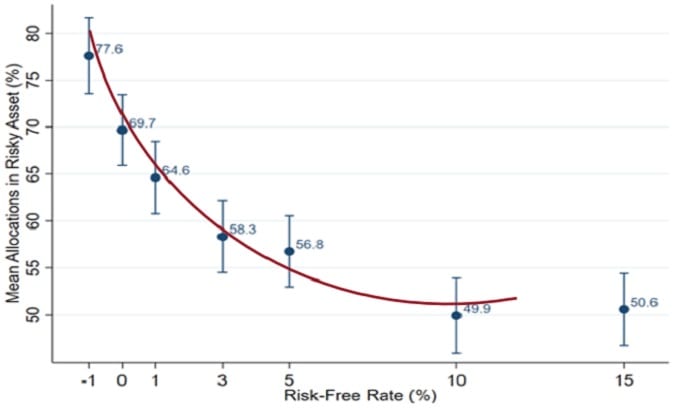Rinascita del valore?
Nick Sheridan, gestore di portafogli value europei, spiega perché prevede che gli investimenti value torneranno alla ribalta.

6 minuti di lettura
In sintesi
- As economies reopen, we are likely to see a boost in gross domestic product (GDP). This is generally good for value stocks, which tend to be more positively correlated with GDP than growth stocks.
- Cheap money and high investor exuberance have, in many instances, bred highly-rated and overhyped growth businesses that may not be robust enough to stand the test of time.
- If the post-pandemic era marks a return to normality, investors should no longer need to pay high sums for companies with the potential to deliver attractive future returns. Value as an asset class may have better times ahead.
The past few years have been a particularly challenging time for investment strategies focused on stocks that fall within the ‘value’ category, at least in terms of perception, given the extreme difference in returns relative to ‘growth’ stocks in the market. So, given the recent revival for value, is it time to revisit the argument?
Value investors look for stocks of companies that are trading at a price that does not match their intrinsic value, which can be measured in various ways, such as book value to price, forward price-earnings (P/E ratio) or dividend yield. But a low P/E ratio does not automatically mean that a stock represents a good investment opportunity, or that poor companies cannot also benefit from broader market factors. It is worth keeping in mind that distressed or overleveraged companies can be among the earliest beneficiaries in any value rally. After all, if you are concerned that a company might go bust, and suddenly that changes, that asset goes from having an expected value of zero to a value higher than zero. In percentage terms, that move can be quite significant, as we have seen.
But is there any prospect of a more fundamental shift from growth to value? The answer may lie in why growth has done so well.
The ‘free money’ factor
The era of vast government spending, financed mostly through debt, has injected a vast amount of liquidity into the system. Near-zero interest rates have encouraged risk taking to the benefit of growth stocks, as shown in the chart below. The scale of stimulus measures in the pandemic has been prodigious, particularly in the US1, where government fiscal measures included the American Rescue Plan ($1.8 trillion), the Paycheck Protection Program and Health Care Enhancement Act ($483 billion), the Coronavirus Aid, Relief and Economy Security (CARES) Act ($2.3 trillion), etc, plus various monetary measures from the US Federal Reserve. At some point, this will need to unwind.
Low interest rates can benefit long duration assets (growth equities) as they encourage risk taking. This will need to unwind.

![]()
The entrepreneurial growth environment
Many fresh-faced entrepreneurs have taken the opportunity offered by record low borrowing costs in recent years to start new businesses, using modern technology to compete with traditional businesses. This spans beyond just consumer goods to cover any embedded service/industry with high legacy costs, such as banks (replaced by apps), finance (apps), publishing (internet as a disruptor), hotels (apps/internet), or any industry that is a commodity but where the industry is fragmented, such as gyms, car rental services or even food basics.
If we roll the clock forward a couple of years, these entrepreneurs may be facing challenges – businesses with growing revenues but with debts, or that are loss making (whether due to start-up costs, unexpected expenditure or selling below cost). It may be the case that these businesses are sold or floated to generate additional investment/cash. As long as investors are happy, the company can continue to raise cash despite making losses or paying no tax, leading to lower returns for everyone in the sector… Does this sound familiar?
Some of these growth companies will overcome the existential challenges facing any new business and go on to great things, unfettered by the costly legacy trappings of past eras. But there are some businesses backed by private equity/investors where the probability of success is likely very low, or where expectations are significantly over-hyped and where their existence is increasing or disrupting supply; hence, lowering incumbents’ returns. The game seems to be ‘winner takes all’, which if cheap money and high investor exuberance continues, is a strategy that can succeed.
The mood music matters
As long as everyone dances to the same tune, nothing changes. But if the music changes; investors should keep in mind that valuations are largely based on the following fundamentals:
1. Sales (revenues)
2. Operating margins
3. Leverage (the level of debt in a business)
4. Cost of debt
5. Tax rates
If anything alters these factors, it will not only affect the intrinsic value of a business, but – more importantly – also the value ascribed by the investor to the business. While company fundamentals usually change on a slower cycle, the mood music for investors can turn in a single moment.
Sales and margins
It is difficult to ignore the argument that global gross domestic product (GDP) is likely to rise strongly in the months ahead as economies reopen. This should, in general, be good for value stocks, as sales and profits tend to be more correlated with the direction of the economy (GDP) than for growth stocks. Value stocks often have higher fixed costs, so they are likely to benefit more than growth stocks, in terms of margin expansion, from any recovery in sales (see points 1 and 2 above).
The return of inflation, whether it turns out to be transient or not, is also a supportive factor for value. It allows companies to increase prices and brings demand forward – buy now, rather than later when prices have gone up – and should correlate with higher wage levels (another driver of demand). Finally, inflation and a change in monetary policy (higher interest rates) increases the discount rates for equities, which is better news for value stocks than growth.
Leverage and tax rates
Looking at points 3 and 4, the level of debt and the cost of this debt can be a double-edged sword; in that it can hurt value stocks (which tend to have higher leverage) in bad times but provide a tailwind when conditions are right. If we are entering a period of recovery, then it may prove favourable for value.
As for taxes, modern technology firms have faced pressure to pay more tax. We are seeing governments worldwide seeking to grab what some may view as a ‘fairer share’ of their profits, which would clearly impact the valuation of such companies.
But is the mood music changing?
Investor sentiment can be particularly challenging to assess, subject to both market and non-market factors, and with the added complications of fear and euphoria. What constitutes a decisive tipping point is often only identifiable with hindsight. So, what can we say?
We have argued that market fundamentals seem to favour value at present, but some factors require caveat. If global GDP growth leads to sustainable inflation and higher interest rates, value should prosper. If we see widespread wage inflation boosting demand, value should prosper. If, globally, trade barriers go up, increasing transaction costs for certain businesses, more domestically focused companies should benefit, which should favour value.
These are all ‘could, would, should’ statements. Ultimately, investors need to start looking at the underlying returns companies are making, rather than dreaming about tomorrow. If the post-pandemic era marks a return to normality, then investors will no longer need to pay up in the hope of holding companies with the potential to deliver attractive returns in future. Value as an asset class may have better times ahead.
Queste sono le opinioni dell'autore al momento della pubblicazione e possono differire da quelle di altri individui/team di Janus Henderson Investors. I riferimenti a singoli titoli non costituiscono una raccomandazione all'acquisto, alla vendita o alla detenzione di un titolo, di una strategia d'investimento o di un settore di mercato e non devono essere considerati redditizi. Janus Henderson Investors, le sue affiliate o i suoi dipendenti possono avere un’esposizione nei titoli citati.
Le performance passate non sono indicative dei rendimenti futuri. Tutti i dati dei rendimenti includono sia il reddito che le plusvalenze o le eventuali perdite ma sono al lordo dei costi delle commissioni dovuti al momento dell'emissione.
Le informazioni contenute in questo articolo non devono essere intese come una guida all'investimento.
Non vi è alcuna garanzia che le tendenze passate continuino o che le previsioni si realizzino.
Comunicazione di Marketing.
Informazioni importanti
Si prega di leggere attentamente le seguenti informazioni sui fondi citati in questo articolo.
- Le azioni/quote possono perdere valore rapidamente e di norma implicano rischi più elevati rispetto alle obbligazioni o agli strumenti del mercato monetario. Di conseguenza il valore del proprio investimento potrebbe diminuire.
- Un Fondo che presenta un’esposizione elevata a un determinato paese o regione geografica comporta un livello maggiore di rischio rispetto a un Fondo più diversificato.
- Il Fondo potrebbe usare derivati al fine di ridurre il rischio o gestire il portafoglio in modo più efficiente. Ciò, tuttavia, comporta rischi aggiuntivi, in particolare il rischio che la controparte del derivato non adempia i suoi obblighi contrattuali.
- Qualora il Fondo detenga attivi in valute diverse da quella di base del Fondo o l'investitore detenga azioni o quote in un'altra valuta (in assenza di "copertura"), il valore dell'investimento potrebbe subire le oscillazioni del tasso di cambio.
- Se il Fondo, o una classe di azioni con copertura, intende attenuare le fluttuazioni del tasso di cambio tra la valuta di denominazione e la valuta di base, la stessa strategia di copertura potrebbe generare un effetto positivo o negativo sul valore del Fondo, a causa delle differenze di tasso d'interesse a breve termine tra le due valute.
- I titoli del Fondo potrebbero diventare difficili da valutare o da vendere al prezzo e con le tempistiche desiderati, specie in condizioni di mercato estreme con il prezzo delle attività in calo, aumentando il rischio di perdite sull'investimento.
- Il Fondo potrebbe perdere denaro se una controparte con la quale il Fondo effettua scambi non fosse più intenzionata ad adempiere ai propri obblighi, o a causa di un errore o di un ritardo nei processi operativi o di una negligenza di un fornitore terzo.
- Il Fondo segue un approccio d'investimento value, che comporta una preferenza per determinate tipologie di società. Ciò può comportare una significativa sottoperformance o sovraperformance del Fondo rispetto al resto del mercato.